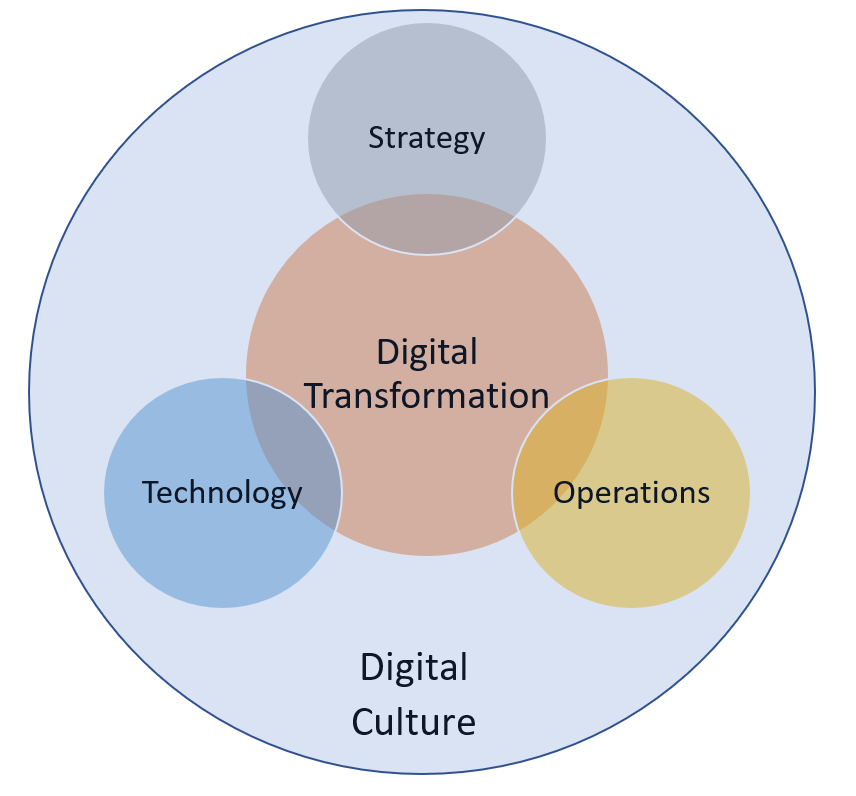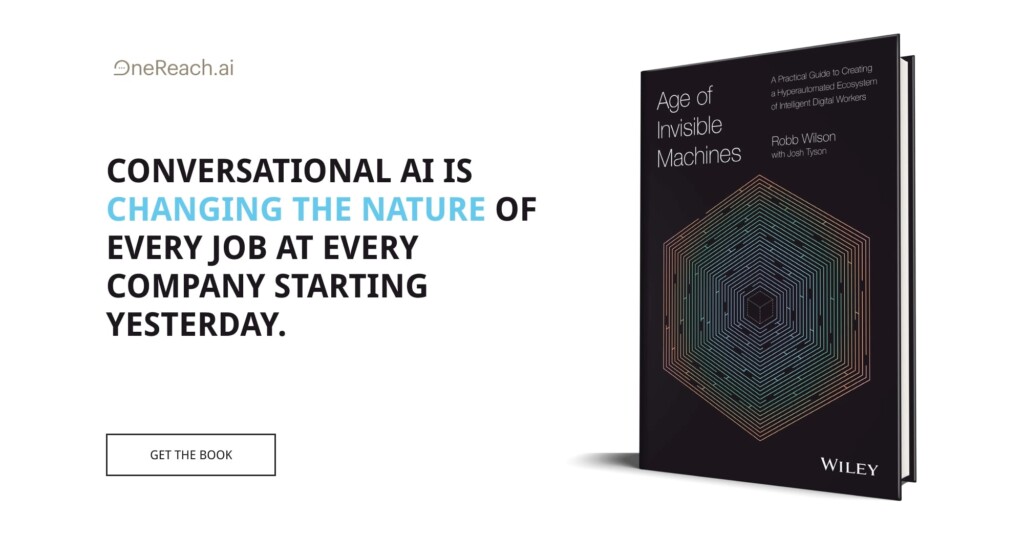Given that we have clearly established the need for digital transformation in the earlier article Digital Transformation — what exactly is it? it is only natural for us to assume that companies which undergo DX are instantly profitable and are ahead of their competition. However, a recent real-world research of 850 companies across the globe performed by BCG brings to light the fact that only 35% of the companies achieved their digital transformation objectives in 2021, a marginal improvement of 5 percentage points over the 2020 figures. (Boston Consulting Group, December 2021
So, here we will look at what could be some of the critical success factors for Digital Transformation and how should companies approach the same. As we know, Digital transformation is the cusp of strategy, operations and technology; however, there should be an overarching emphasis on the culture, which is often the primary parameter that organisations should consider.
Of course, the first thing that is required for digital transformation is the possession of digital assets. These could be computers, software or cloud solutions that the company has acquired / built in order to utilize them for business development. However, it is not essential for every company to have the most cutting-edge technology products to be successful in its digital transformation endeavour. In fact, every organisation is unique and there is no one-size-fits-all solution for digital transformation.
Before companies decide on their investments in digital assets, it is imperative that they do a thorough analysis of the company, the industry, the target customers, current digital maturity and the company culture. (What is digital transformation?, n.d.) Fortunately, there are many strategic consultants that help companies navigate the DX journey and provide consulting services with respect to their technology investments. (McKinsey Global Institute, June 2016)
The next step is to reengineer the processes around the technology tools, so that their potential can be best leveraged for greater speed, flexibility, customer insight etc. This is a great opportunity for organisations to eliminate waste and become lean.

However, the endeavour does not stop with mere acquisition of technology products or redesigning processes; it is important that the workforce of the company acquire the required skills and mindset for actively engaging with the digital technologies. Most employees will need to be upskilled or reskilled to use the newer products, platforms or equipment.
Unfortunately, most companies stop their digital transformation journey at this point. They tend to believe that once their employees are trained on using the products, they will naturally be efficient in doing so and that the introduction of newer technologies will yield them greater revenues and more satisfied customers.
This myth has been busted by several surveys by various organizations. (Irvin, 2019) Companies do not become profitable by merely introducing newer technology to their operations. What is often ignored or overlooked is the fact that digital transformation requires a complete shift in the organization’s culture and need for a digital mindset, rather than the mere ability to use a tool or technology.
So, what exactly is digital mindset and how do companies imbibe this in their employees?
There are 4 key tenets to having a digital mindset:
1. Customer obsession
2. Agile and iterative development
3. Constant collaboration and transparency among teams
4. Willingness to take risks
Customer Obsession
Gone are the days when firms produced in bulk and customers consumed whatever was available. Technology has skewed the power equation highly in favor of customers. Today’s customers are demanding and need information/products instantly, whether at the click of a button or just by using voice commands. They demand ease and convenience throughout the buying cycle and beyond. Hyper personalization has become common and customers are unwilling to pay for or spend their time on things that are not entirely relevant to them.
Hence companies should inculcate the customer-centric mindset in all their employees and this message should be driven top-down. All strategic, operational, and design decisions must be made with customer experience as the key driving factor. Companies need to create an environment where not just the customer-facing teams but every employee feels that customers are why the firm exists and that every effort needs to be put in place to improve customer engagement.
Agile & Iterative development
When a concept is developed, it is absolutely essential that the product goes through an iterative development process. Every time a lean product or prototype is launched, the company can get a lot of meaningful feedback from the early adaptors and innovators. This helps them drop/redesign unimportant features and build more relevant features for the consumers.
Seeking early feedback on a minimum viable product (MVP) saves a lot of time and effort and puts the company right on track from the beginning rather than go through a long/painful journey of product launches and failures. Technology has enabled rapid prototyping and faster time to market which can be thoroughly leveraged by firms to learn faster and be smarter in decision making
Constant collaboration & Transparency

Traditional organizations are structured with strict hierarchies, standard power centers, and centralized decision-making units. Most departments operate in silos with no common vision. Such rigid structures have proven to be too slow and not a good fit for the technology-driven arena of today. The various roles & responsibilities that were firmly defined are giving way to a more collaborative culture where the teams are empowered to take ownership of tasks rather than faithfully follow organizational pyramids.
Such transparency and openness lead to more complete product development and better customer focus. Empowered teams also save a lot of time which is otherwise wasted in waiting for approvals and following through slow-processes to communicate across teams.
Risk Taking

An organization can claim to have undergone a digital metamorphosis if and only if the new culture encourages and is willing to take on more risks. In traditional organizations, rewards were often tied explicitly to financial success and a more incremental approach to innovation was encouraged. Radical changes with a propensity to failure were strongly discouraged which paved for newer companies and startups to disrupt the market.
With the technological evolutions, it is important for employees and teams to be able to experiment with newer ideas and business models without fear of failure and subsequent admonition.
These cultural changes cannot happen overnight and will require conscious effort. Constant encouragement from the top management for showcasing the desired behavior is crucial. Training on digital mindset and continuous reinforcement goes a long way in imbibing a digital culture in the employees.
Teams that operate as digital natives are better equipped to deal with the uncertainties associated with technological disruptions and will be prepared to face the changing dynamics of the business world.
References
Boston Consulting Group. (December 2021). Performance and Innovation are the Rewards of Digital Transformation. BCG.
Edelman, K. D. (2015, July). Retrieved from McKinsey Digital.
George Westerman, D. B. (2014). Leading Digital: Turning Technology Into Business Transformation. Harvard Business Press,.
Irvin, B. T. (2019, March 13). Digital Transformation Is Not About Technology. HBR.
McKinsey Global Institute. (June 2016). DIGITAL EUROPE: PUSHING THE FRONTIER, CAPTURING THE BENEFITS. McKinsey & Company 2016.
What is digital transformation? (n.d.). Retrieved, from The Enterprisers Project.









